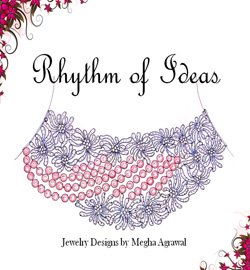Diamond Simulants - The diamond look-alikes
Diamond Simulants or
“Diamante” are not same as diamond. On this page, you will get a fair understanding of simulants of diamond and how these can be classified.
What is Diamond Simulant?
In real terms It is used as replacement of diamond because of its diamond-like appearance. Unlike diamond, it is not in pure carbon form. Rather it is composed of different compounds.
Simulants have same gemological characteristics as natural diamonds.
It can be classified into:
- Natural (e.g. Moissanite)
- Artificial (e.g. Rhinestones, Cubic Zirconia or CZ diamond, Strontium Titanate and Synthetic Rutile)
- Combination of both
Check CZ Diamond and Moissanite, the two most popular simulants for more information
Comparison Chart
| Natural Diamond | Moissanite | Cubic Zirconia |
|---|---|---|
| Specific Gravity 3.52. | Specific Gravity 3.2. | Specific Gravity 5.6-6.0. |
| Hardness is 10 on Mohs Scale. | Hardness is 8.5-9.25 on Mohs Scale. | Hardness is 8.3-10 on Mohs Scale. |
| Refractive Index (the degree to which ray of light bends in the given object) is 2.417-2.419. This property is used to measure brilliance. Higher the RI, more is the brilliance. | Refractive Index is 2.65-2.69. | Refractive Index is 2.15-2.18. |
| Co-efficient of Dispersion (COD) is 0.044. Higher is the COD value, more is the visibility of spectral colors with naked eye. | COD is 0.104. | COD is 0.058-0.066. |
Refractive Index
| This is the property of medium through which light can pass. It is the measure of degree to which a ray of light bends in the given medium. Denser is the medium, more is the bending of light, so higher is the refractive index. Technically speaking, refractive index is ratio of speed of light in vacuum and speed in the given medium. |
Dispersion
| Dispersion, refers to an optical property of gemstones whereby flashes and pinpoints of spectral colors are displayed as the stone is turned in the light. The dispersive colors we see are not really there in the gem, instead, they are created by the behavior of white light in the stone. |
Return from Diamond Simulants to Diamond Formation page
Return from Diamond Simulants to Diamond Jewelry homepage
I hope you'll not mind sharing this on Twitter, Facebook and with everyone else :)
Feel free to share if something is in your mind and want it to be covered on this site.
My Newsletter
Did you liked this article? Sign-up my FREE weekly newsletter and I'll send you more awesome new additions on this website along with latest jewelry happenings around the world, and download my Jewelry Design Album for FREE!
 |
|


